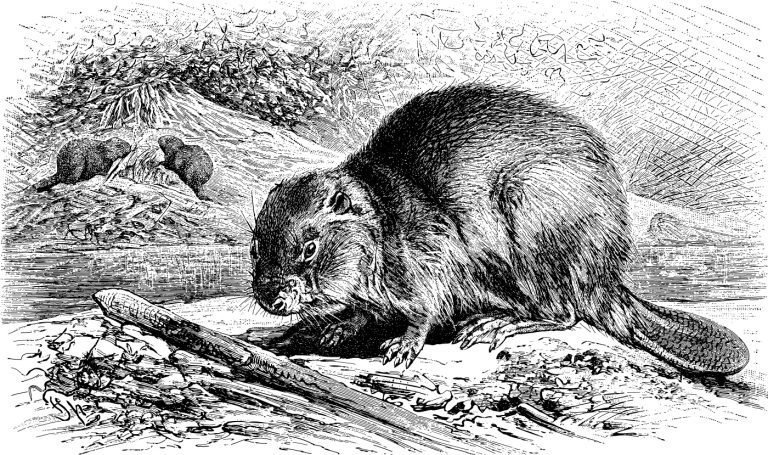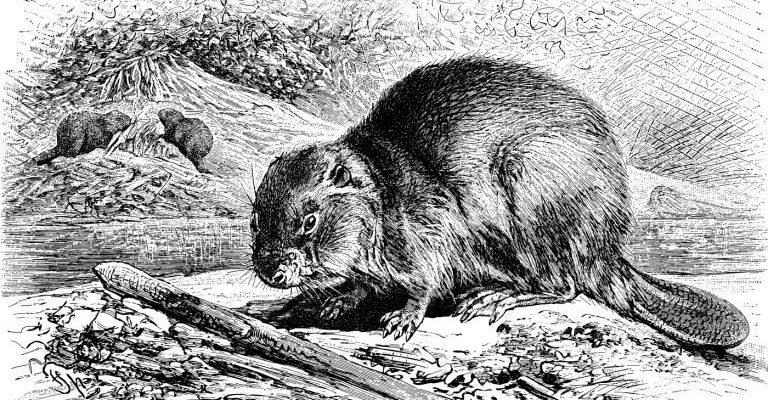
Here’s the thing: beavers aren’t just cute; they’ve got a long and rich history. They’ve been around for more than 30 million years! The story of their evolution is a testament to how species adapt, survive, and thrive. So, grab your coffee, and let’s dive into the intricate world of beaver evolution.
Beavers: A Brief Introduction
Before we delve into their history, let’s quickly recap what makes a beaver a beaver. These semi-aquatic mammals belong to the family Castoridae and are known for their webbed feet, strong tails, and, of course, those ever-gnawing front teeth. Beavers are divided mainly into two species: the North American beaver (*Castor canadensis*) and the Eurasian beaver (*Castor fiber*). Both species are remarkable for their ability to alter environments by building dams, which creates ponds that provide them safety and abundant food.
You might be wondering why beavers are so crucial to their habitats. Well, these little engineers not only create homes for themselves but also support countless other species by maintaining healthy ecosystems. Their dams help control water levels and filter pollutants, proving that their role is vital for ecological balance.
The Origins of Beavers
The story of beavers dates back to the late Paleocene epoch, around 60 million years ago. They’re believed to have evolved from a group of small, rodent-like creatures known as the *mylagaulids*. These early ancestors were quite different from the beavers we know today. They had features that looked more like modern-day rats than the furry builders we think of.
During the Eocene epoch, which lasted from about 56 to 33.9 million years ago, the ancestors of beavers began to take shape. Fossils suggest that they started to develop the characteristic features we associate with beavers, like their flat, scaly tails and strong front teeth designed for chewing wood. It’s fascinating to think about how these early creatures slowly evolved, adapting to their environments while learning the “art” of dam building.
Beavers in the Miocene and Pleistocene Epochs
Fast forward a bit to the Miocene epoch, roughly 23 to 5 million years ago. This was a pivotal time for many species, including beavers. During this period, the climate changed significantly, leading to the expansion of forests and wetlands, which provided new habitats for these clever critters. The beavers were thriving and began to diversify into several species, adapting to various environments.
Then came the Pleistocene epoch, around 2.6 million years ago to about 11,700 years ago. This era was marked by dramatic shifts in climate and landscapes, including the ice ages. Beavers adapted remarkably well, continuing to thrive despite the challenges. Fossil evidence shows that larger species of beavers, like the giant beaver (*Castoroides*), roamed North America. These giant relatives weighed about 200 pounds and were nearly the size of a small bear!
The Role of Beavers in the Ecosystem
One of the most remarkable things about beavers is their ability to modify their environment, creating ponds and wetlands. This process not only provides shelter for them but also benefits an array of other wildlife. When beavers build dams, they create habitats for fish, amphibians, birds, and even insects.
Here’s why beaver activity is so crucial:
- Water Conservation: Beaver dams help retain water in landscapes, especially during dry periods, promoting vegetation growth.
- Habitat Creation: The ponds formed by beavers serve as homes for various species, increasing biodiversity.
- Soil Health: The waterlogged areas created by beavers lead to rich, fertile soils that benefit plant life.
This ecosystem engineering showcases an incredible relationship between beavers and their environment. By shaping their surroundings, they play a critical role in maintaining ecological health.
Modern Beavers: Challenges and Conservation
Today, beavers face various challenges, primarily due to human activities. Urban development, logging, and agriculture have all impacted their habitats, leading to a decline in some populations. Surprisingly, rather than being pests, beavers are often viewed as valuable contributors to ecosystem health.
Conservation efforts are underway to protect these furry architects. Organizations work to create beaver-friendly policies, helping to balance human needs while also ensuring that beavers can thrive. The idea is to coexist—to allow these animals to continue their vital role in our ecosystems while minimizing conflicts with humans.
The evolution of beavers is not just a tale of survival; it’s a story of adaptation, innovation, and the critical role they play in our world. These creatures remind us that every species has its part in the bigger picture of life on Earth. Beavers are more than simple rodents; they are integral parts of our ecosystems, shaping landscapes and supporting diverse forms of life.
As we continue to learn about their history and their role in the environment, it’s essential to recognize the importance of conserving their populations and habitats. By understanding the evolutionary history of the beaver, we gain insight into the delicate balance of nature and the need for sustainable coexistence. So, the next time you see a beaver, think of it not just as a cute, busy creature, but as a symbol of resilience and ecological importance.

